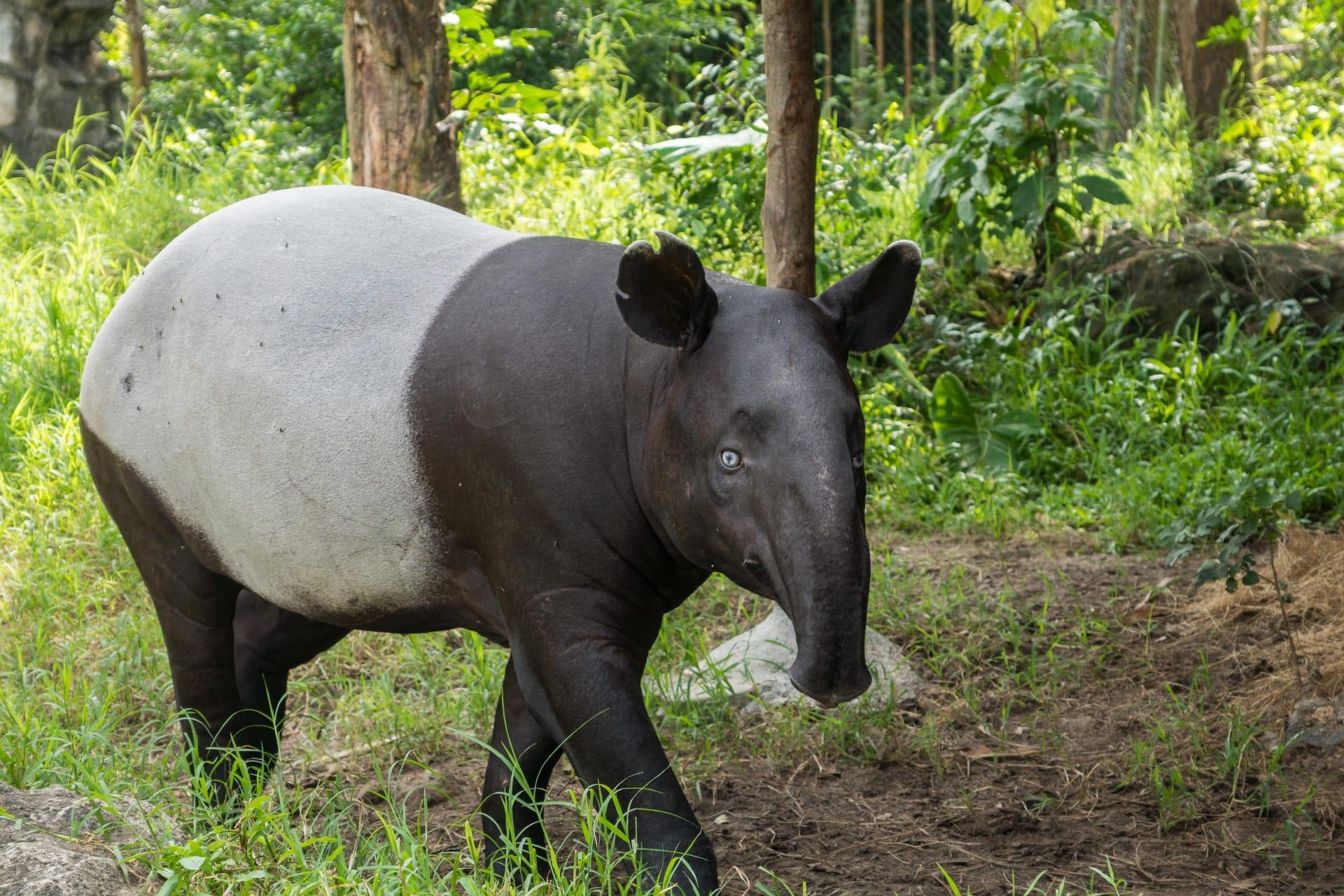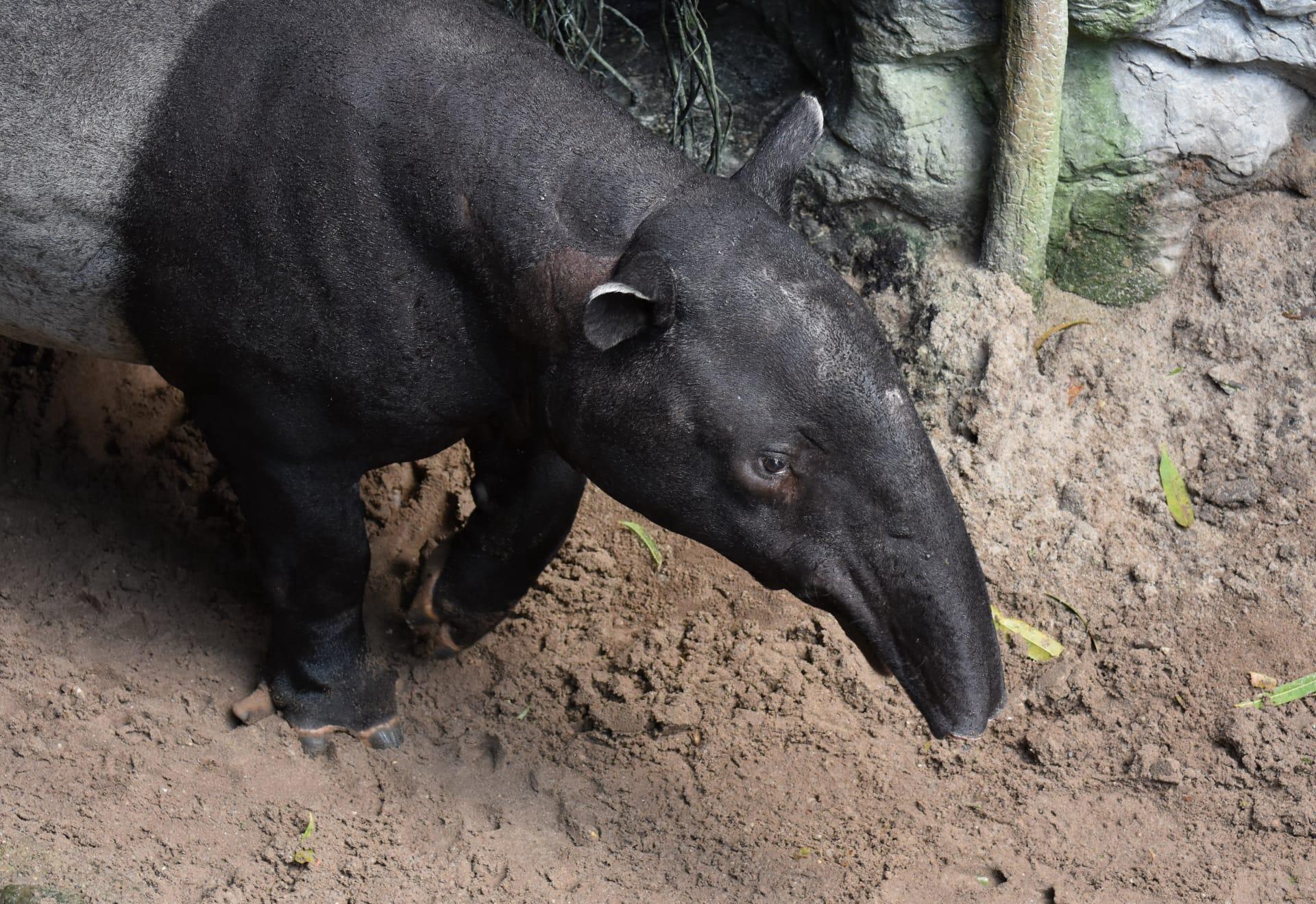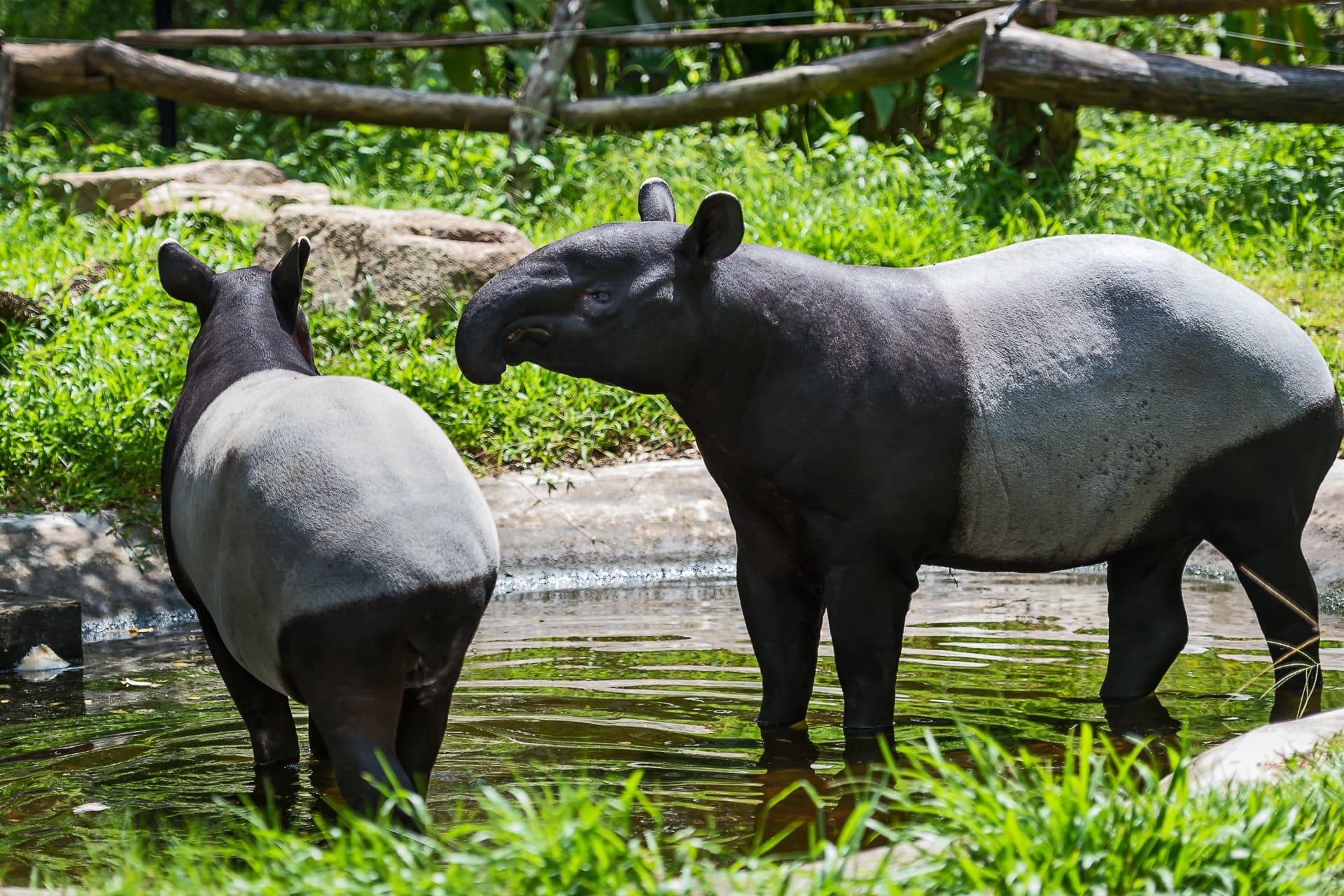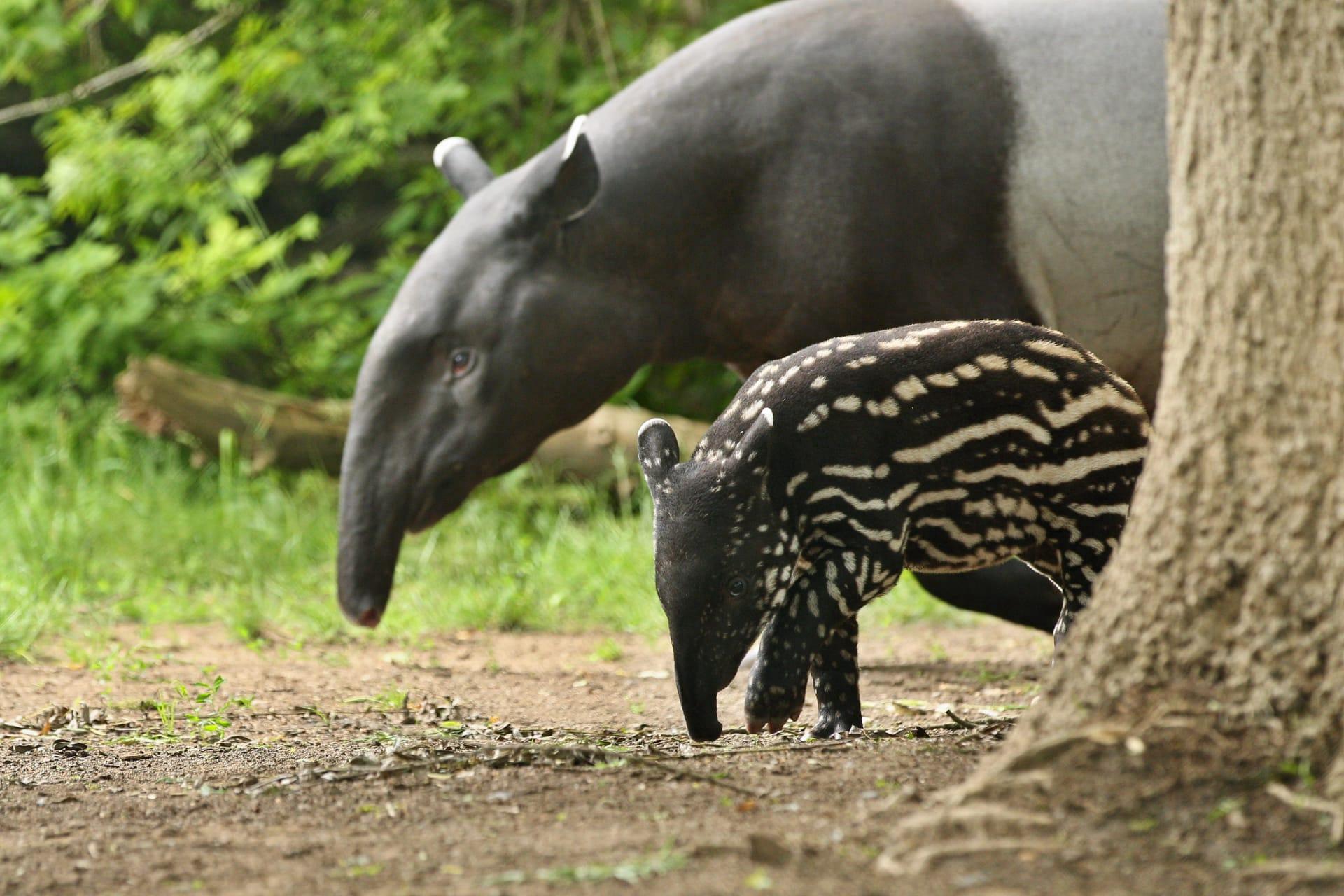1
Tapirs, with their distinctive snout resembling an elephant's trunk, are remarkable for their sensory abilities. This snout is highly flexible and acts like a fifth limb, aiding in foraging. It can move in all directions, allowing tapirs to grab leaves and fruit with surprising dexterity. This adaptation is particularly useful in their natural habitats, such as the dense rainforests of Malaysia, where maneuvering through thick underbrush is essential.
Another intriguing aspect of tapirs is their swimming prowess. They are excellent swimmers and can even dive to feed on aquatic plants. This skill is crucial for their survival, providing an escape from predators and a way to cool down in their tropical environments. Tapirs have been observed crossing rivers and spending considerable time submerged, using their flexible snout like a snorkel to breathe while underwater.

2
Tapirs have a unique and prolonged gestation period, lasting about 13 months, one of the longest among land mammals. This extended pregnancy results in the birth of usually a single calf, which is distinctly patterned with white stripes and spots on a dark background. This camouflage helps the young tapir blend into the dappled sunlight of the forest floor, offering protection from predators. The stripes and spots gradually fade as the tapir matures, transitioning to a solid color by six months of age.
The lifespan of tapirs in the wild is about 30 years, which is quite long compared to other mammals of similar size. This longevity is attributed to their low-stress lifestyle and lack of natural predators, aside from jaguars and crocodiles. In captivity, with optimal care, tapirs can live even longer, highlighting the impact of environment and care on their overall health and lifespan.

3
Tapirs play a crucial role in their ecosystems as seed dispersers. Their diet primarily consists of fruit, which they digest only partially. The seeds pass through their digestive system intact and are dispersed over a wide area in their droppings. This process aids in forest regeneration and the spread of various plant species, making tapirs vital for maintaining the biodiversity of their habitats.
A lesser-known fact about tapirs is their vocal communication. They produce a variety of sounds, including whistles, squeals, and snorts, to communicate with each other. These sounds are especially important during mating season and for mothers to bond with their calves. The vocalizations vary in pitch and intensity, conveying different messages, such as warning of danger or signaling readiness to mate.

4
Tapirs have an unusual feature in their number of toes. While their front feet have four toes, their hind feet have only three. This toe arrangement is unique among large mammals and is thought to aid in navigating their often muddy and uneven forest habitats. The structure of their feet, combined with their large, padded soles, provides stability and grip, essential for traversing slippery riverbanks and forest floors.
Despite their bulky appearance, tapirs are surprisingly agile and can move quickly when necessary. They are capable of rapid bursts of speed and can navigate through dense vegetation with ease. This agility is vital for escaping predators and moving through their complex habitats. Their ability to swiftly turn and dodge obstacles is remarkable, given their size and weight, which can be up to 700 pounds (about 317 kilograms).

5
Tapirs have a remarkable ability to alter their habits based on environmental changes. In areas with human activity, they have been observed to become nocturnal to avoid contact. This adaptability demonstrates their intelligence and flexibility in coping with habitat changes, ensuring their survival despite increasing human encroachment.
Their sense of smell is exceptionally acute, playing a critical role in communication, finding food, and sensing predators. Tapirs rely more on this sense than on their vision or hearing, as their forested habitats often have limited visibility. This heightened olfactory sense allows them to detect scents over long distances, vital for locating food sources and avoiding danger in the dense vegetation.